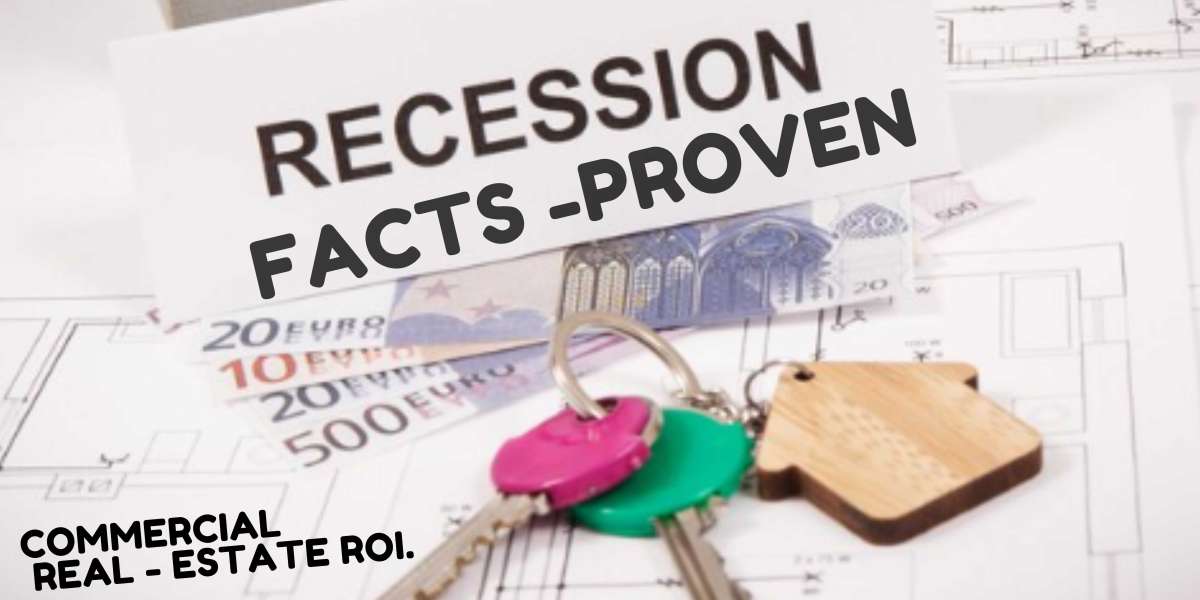Commercial real estate is a dynamic and ever-evolving industry, and one of the key factors that drives its growth and success is financing. In particular, the flexibility of debt financing structures plays a critical role in unlocking opportunities and maximizing the potential of commercial real estate projects. Whether it's acquiring a new property, financing a development, or refinancing an existing asset, understanding the intricacies of different debt financing options can make all the difference in achieving your investment goals. In this blog post, we will delve into the world of commercial real estate debt financing structures, exploring their various forms, advantages, and considerations. By unlocking the possibilities offered by these flexible financing arrangements, you will be empowered to navigate the ever-changing landscape of commercial real estate with confidence and success.
1. An overview of commercial real estate debt financing
Commercial real estate debt financing is a crucial aspect of the real estate industry, providing the necessary funds for various commercial property projects. It is a financing structure that allows businesses and investors to borrow money for acquiring, developing, or refinancing commercial properties such as office buildings, retail spaces, hotels, and industrial facilities.
The primary purpose of commercial real estate debt financing is to bridge the gap between the available capital and the total cost of a property project. It offers flexibility in terms of loan terms, interest rates, and repayment options, tailored to meet the specific needs of borrowers and investors.
One of the key advantages of commercial real estate debt financing is the ability to leverage the property's value. By borrowing funds, investors can acquire a property with a smaller upfront investment and potentially achieve higher returns on their investment. This leverage allows investors to diversify their portfolio and increase their potential income generation.
Commercial real estate debt financing structures typically involve a lender, such as a bank or financial institution, providing the necessary funds to the borrower. The terms of the loan, including the interest rate, repayment schedule, and collateral requirements, are negotiated between the lender and borrower based on factors such as the property's value, the borrower's creditworthiness, and the overall market conditions.
Different types of debt financing structures are available in the commercial real estate market, including traditional mortgages, bridge loans, mezzanine financing, and construction loans. Each structure has its own benefits and considerations, depending on the specific requirements of the project and the risk tolerance of the borrower. commercial real estate debt financing plays a vital role in facilitating property investments and development projects. It provides the necessary capital for businesses and investors to unlock the possibilities of commercial real estate, offering flexibility in terms of loan options and repayment terms. Understanding the various debt financing structures available can empower borrowers and investors to make informed decisions and seize opportunities in the dynamic world of commercial real estate.
2. Traditional debt financing structures and their advantages
When it comes to financing commercial real estate, traditional debt financing structures have been the go-to option for many investors. These structures offer various advantages that make them a popular choice in the industry.
One of the main advantages of traditional debt financing structures is their simplicity. These structures involve a straightforward loan agreement between the borrower and the lender. The borrower receives a lump sum of money and agrees to repay it with interest over a specified period of time. This simplicity makes it easier for both parties to understand and manage the terms of the loan.
Another advantage of traditional debt financing structures is the lower cost of capital. Compared to other financing options, such as equity financing, debt financing often comes with lower interest rates. This means that borrowers can access the funds they need while keeping their overall cost of borrowing relatively low.
Additionally, traditional debt financing structures offer more flexibility in terms of repayment schedules. Borrowers can negotiate the repayment terms that align with their business plans and financial capabilities. This flexibility allows them to manage their cash flow effectively and make timely payments without straining their resources.
Furthermore, traditional debt financing structures provide an opportunity for borrowers to build their creditworthiness. By making regular and timely payments, borrowers can establish a positive credit history, which can open doors to future financing opportunities with more favorable terms.
Lastly, traditional debt financing structures often come with tax advantages. Interest payments on commercial real estate loans are generally tax-deductible, which can help borrowers reduce their overall tax liabilities and improve their financial positions. traditional debt financing structures offer numerous advantages for commercial real estate investors. Their simplicity, lower cost of capital, flexibility in repayment schedules, credit-building potential, and potential tax advantages make them a reliable and attractive choice for financing commercial real estate projects.
3. Alternative debt financing options and their benefits
When it comes to financing commercial real estate projects, there is a wide range of options available beyond traditional bank loans. Alternative debt financing structures can provide a more flexible and tailored approach to meet the specific needs of each project. One option is mezzanine financing, which involves obtaining a secondary loan that sits between the senior debt and equity. This type of financing allows for higher leverage and can be particularly beneficial for projects that require additional capital or have unique cash flow requirements.
Another alternative option is preferred equity financing, where an investor provides capital in exchange for an equity stake in the project. This structure offers more flexibility than traditional debt financing, as it allows for potential upside participation in the project's success. Additionally, preferred equity financing can be particularly attractive for sponsors looking to minimize their personal guarantees or diversify their sources of capital.
Bridge loans are yet another option that provides short-term financing to bridge the gap between the acquisition of a property and securing permanent financing. These loans offer a quick and efficient solution, allowing investors to take advantage of time-sensitive opportunities and avoid potential delays associated with traditional bank financing.
One of the main benefits of these alternative debt financing structures is the flexibility they offer. Traditional bank loans often come with rigid terms and conditions, making it challenging to navigate complex projects or unique circumstances. Alternative options, on the other hand, can be customized to meet specific requirements and mitigate risks associated with commercial real estate ventures.
Furthermore, these alternative financing options often come from non-traditional lenders such as private equity firms, hedge funds, or specialty financing companies. These lenders have a deep understanding of the real estate market and are more willing to take on higher-risk projects or accommodate unconventional deals. exploring the flexibility of alternative debt financing structures can unlock new possibilities for commercial real estate projects. Whether through mezzanine financing, preferred equity, or bridge loans, these options provide the flexibility and customization needed to navigate complex deals, seize opportunities, and optimize returns. By considering these alternative options, investors and sponsors can find innovative solutions that align with their unique goals and requirements, ultimately unlocking the full potential of their commercial real estate ventures
4. Considerations when choosing a debt financing structure
When it comes to commercial real estate debt financing, there are various structures to consider. Each structure offers its own advantages and disadvantages, making it crucial to carefully evaluate your options before making a decision.
Firstly, you need to consider the term of the loan. Do you need short-term financing, typically ranging from one to three years, or are you looking for a longer-term loan? Determining the appropriate term is essential as it will impact your cash flow and overall financial strategy.
Next, think about the interest rate and payment structure. Are you comfortable with a fixed interest rate, which provides stability but may not take advantage of potential market fluctuations? Alternatively, you may prefer a variable rate that aligns with market conditions but poses the risk of increasing rates over time. Additionally, consider whether you want monthly, quarterly, or annual payments and if you prefer the option of interest-only payments during a specific period.
Furthermore, assess any prepayment penalties or fees associated with the financing structure. Some loan agreements may include penalties if you decide to repay the loan early, which might limit your flexibility. It is crucial to understand these implications to avoid any unexpected costs down the line.
Additionally, evaluate the loan-to-value (LTV) ratio and the required down payment. Different financing structures may have varying LTV ratios, which determine the maximum amount you can borrow relative to the property's value. Understanding the LTV ratio will help you determine the capital you need to contribute as a down payment.
Lastly, assess the financial institution or lender offering the financing. Consider their reputation, expertise in commercial real estate lending, and customer service. A reliable and experienced lender can provide valuable guidance throughout the process and ensure a smooth and successful financing experience.
In conclusion, carefully considering these factors when choosing a commercial real estate debt financing structure is essential. By assessing the loan term, interest rate and payment structure, prepayment penalties, LTV ratio, and the lender's reputation, you can make an informed decision that aligns with your financial goals and maximizes the flexibility of your investment.



